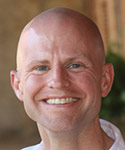Average worship attendance was once such an important number. With it, I could predict the size of the church staff, the informal patterns of decision-making, most of the stresses on the pastor’s time, the leadership required for small groups, and more.
Back in the day, church consultant Lyle Schaller was quoted as saying that average worship attendance was a better indicator of congregational behavior than denomination, geography or neighborhood.
Today that number means much less because the definition of an active member has shifted.
At one time, “active” meant attending services three or four times a month. Today people feel active when they enter the church building once or twice a month. Some people engage worship more regularly online than from the pew. Others prioritize participation in a small group over worship attendance. Congregations have multiple services and, increasingly, multiple campuses.
It is more and more difficult to determine what “attending” means, much less judge someone as “active.”
These changes are signs that congregational culture is now less uniform, which has practical implications for things like the development of a Bible study curriculum.
When a denominational publishing house could predict the needs of congregations, curriculum materials could be mass-produced. While the number and variety of materials have expanded in recent years, teachers are often dissatisfied with their options. They then feel obligated to write congregation-specific material for children, youth or adults, requiring a huge commitment of time and creativity.
Developing customized curriculum and activities, such as missions experiences, means that the congregation feels a need for more staff, regardless of the church’s size. The needs are not connected to any predictable ratio of ministers to members, but the costs are.
In the old days, attendance was a good predictor of revenue for the church. Today, revenue can be up when attendance is down -- sometimes these trends can go in opposite directions for years.
In a doctoral seminar with experienced pastors last semester, the group begged for help in developing a score card of statistics by which they could monitor the vitality of their congregations. Each was tracking average worship attendance, giving, mission/ministry hours and more. Yet, the relationships between the numbers were not clear.
Church attendance was once a key indicator of a virtuous cycle. If the church could get a new person in the pew regularly, offerings would go up, involvement in small groups and missions would climb, and the church would be healthy. If attendance was declining then everything else would eventually decline.
The growing lack of dependability on attendance is a sign that the virtuous cycles that have sustained congregations since the end of World War II are collapsing. In order to sustain congregations over the long haul, new cycles need to be developed. Once that begins to happen, new measures can be identified.
One place to start is to map all the ways that a person engages a congregation -- joining a small group, attending group meetings and social functions, contributing to special causes and to the church’s general budget, reading sermons or other resources on-line, volunteering in a missions project, teaching a class and more.
What patterns of engagement emerge? Which activities encourage participation in other activities? What practices are most likely to lead to spiritual growth? These are the building blocks of virtuous cycles.
Having answered these questions, look at the numbers the congregation is gathering or could be gathering. How do these numbers help track the ways of engagement? What other data could be gathered easily? It is important to gather data that are measurable signs of the engagement that matters most.
Marketing is all about answering these sorts of questions. Rather than seek to master this field, I prefer to ask for help from an expert. No marketing professional knows the church like the leaders, but the expert can ask the questions and organize the data into something that can be tracked over time.
Yes, this is a lot of work. I wish we could go back to the good old days and track a couple of different numbers. But, most people know that is no longer working. What will we do about it?















